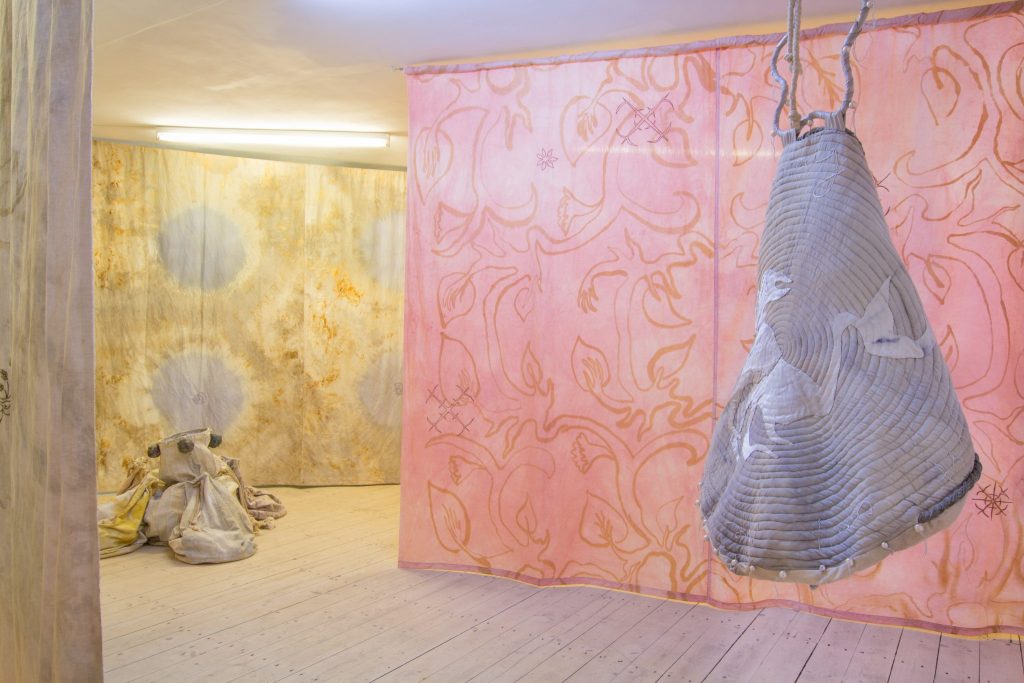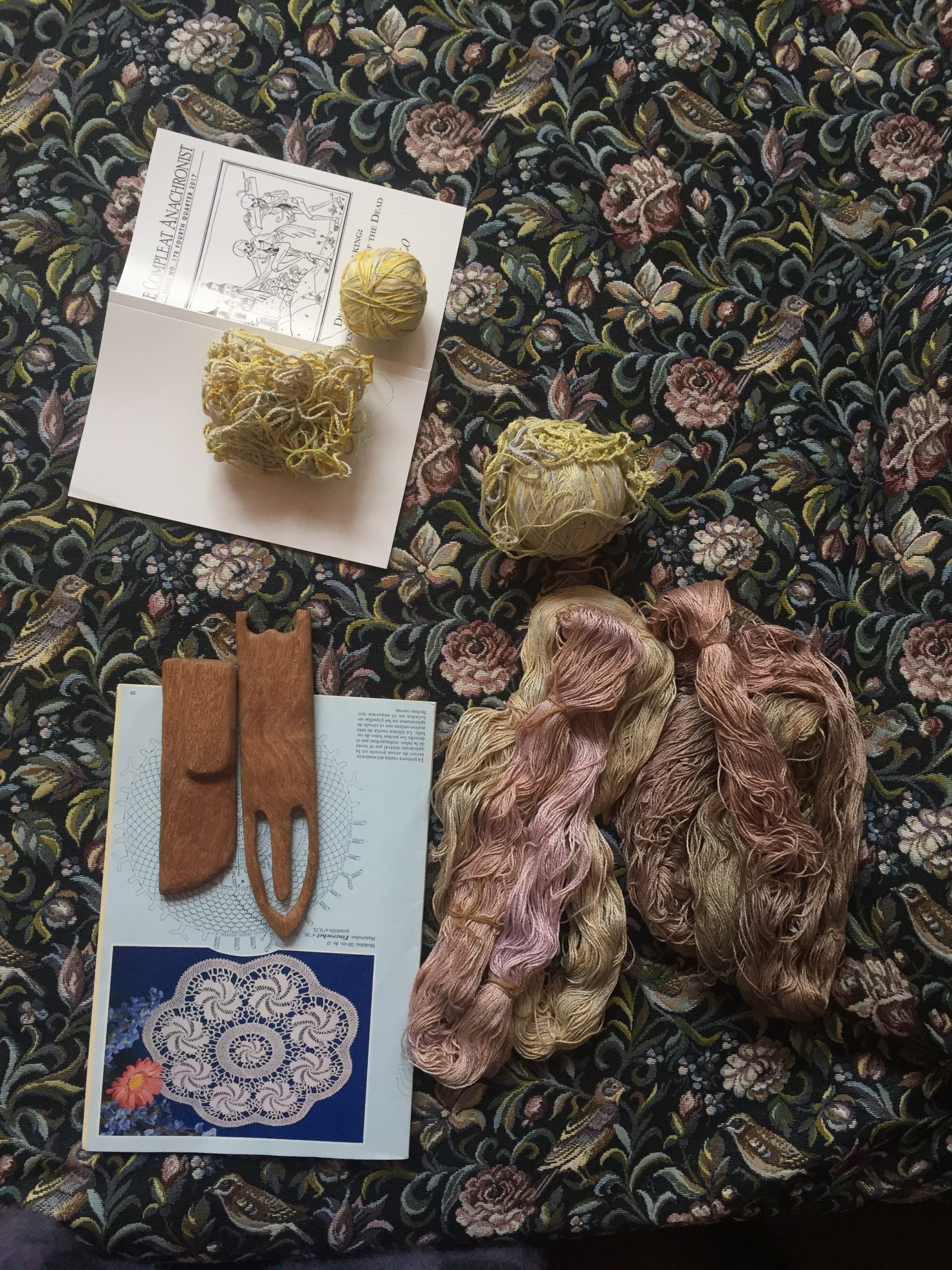Anna Reutinger, b. 1991 in Oakland, California lives and works in Berlin. Her practice combines sculpture, installation and performance to propose a return to craft in defiance of capitalist production cycles and as seed for social, material and environmental empathy. Oscillating between incidental and intentional gestures, she uses found material and social input to expose the transitory nature of things and beings, and their interconnection.
For the month of April 2021, she has been an artist in residence at Rupert in Vilnius, Lithuania. After the residence Reutinger made her solo show at project space “Editorial”, in which we are located. Because of that, we share Anna Reutinger’s literature recomandations:
The Carrier Bag Theory of Fiction – Ursula K. Le Guin (1986)
Inspired by the Carrier Bag theory of evolution, which states that the first human tool was not the weapon to kill but the bag to carry. In this text she calls for a shift in storytelling, from the tales of the mammoth hunters to those of the oat pickers, from stories with one climax and hero to those with many voices and perspectives performing their daily lives. This has been a major guiding text for me in the last two years.
“The Textuality of Diagonal Ornamentation: Historical transformations of signification from the Baltic Perspective” – Vytautas Tumėnas (2014)
Professor Tumėnas was one of the people I interviewed while in Vilnius. This is the text that first introduced me to his work on the ornamentation of woven bands, in which he traces the progression from symbol to text, claiming a reduction/simplification in meaning as their commodification translated their symbolism from large mythopoetic ideas into more easily consumable forms. Our conversation will be published in book to be released this summer.
The Craftsman – Richard Sennett (1997)
A text I keep coming back to when thinking about craft as a performance in opposition to capitalist values. Sennet speaks of doing a job well for its own sake, developing technique and understanding material to focus on something outside of ourselves.
“Extended spider cognition” – Hilton F. Japyassú and Kevin N. Laland (2017)
Fellow Rupert resident, Tom Kemp, mentioned this to me and after further inspection it supports many of my ideas. Through the spinning of their webs, spiders are able to expand their cognitive capacities beyond their central nervous system, broadening their sensitivity to their environment and those that exist in it. I’d like to think of craft in the same way.

The Goddesses and Gods of old Europe, 6500-3500 BC. Myths and cult images – Marija Gimbutas (1974)
This was my introduction to the work of Marija Gimbutas, a well known but often criticized Lithuanian anthropologist and archaeologist who spun broad webs of associations between symbols, myths and artifacts which she interpreted into images of Neolithic and Bronze Age spiritualities and values of “Old Europe”. This book centers around a study of Neolithic sculpture found in southeastern Europe, and portrays a peaceful people whose goddesses were not solely symbols of fertility but of rejuvenation and that what might be considered as “primitive” or simple in form from present eyes was actually coming from a high level of craft combined with complex understandings of the world.
10,000 Light Years from Home – James Tipptree Jr. (Alice Bradley Sheldon) (1973)
James Tipptree Jr. (Alice Bradley Sheldon) wrote science fiction alongside her experimental psychology PhD after working for the CIA and later moving to a chicken farm. She was a pen pal of Ursula K. Le Guin and disclosed her real identity 20 years after being recognized as a rather macho but surprisingly feminist male author. This is a collection of her short stories in which elaborate worlds are not explained but lived in, and they take a few reads to absorb. I see science fiction, as with a study of the distant past, as a way to view the present from different angles and suggest alternative ways of living and being.
Medieval Graffiti – Matthew Champion (2015)
My introduction into apotropaic symbology, through the study of inscriptions in church walls across England performed by archaeologist Matthew Champion. These inscriptions were thought to have been made by churchgoers and tourists in the middle ages and depict a wide range of symbols—from demons and faces to ships, livestock and geometric patterns—and are thought to be some of the only surviving first-hand traces of medieval non-elite.
Dead Man Walking: Preventing the Return of the Dead – Dina Ternullo and Medieval Views on Color – Kathleen Keeler
These are just two of a large series of publications published by the Society for Creative Anachronism, an international organization started in Berkeley, California in 1966 for the preservation and reenactment of pre-17th century craft and life. Their membership seems to have spread largely amongst science fiction fans, so maybe take the historical accuracy with a grain of salt, but also not to underestimate the depth and dedication of hobbyists. There are a number of strange and specific gems to be found in their catalog: https://members.sca.org/apps/#Store
Medieval Bodies – Jack Hartnell (2018)
This is a very digestible and entertaining overview of the medieval perception of the body and its maintenance through European and Islamic art, tracing histories of medical professions and changing religious beliefs. A good companion in time travel.
Making Kin not Population – edited by Donna Haraway (2018)
A series of essays on expanding our definition of family, calling for creating kin rather than following reproductive norms. I’ve been thinking a lot about how to consider what we bring into this world and why—not just children, but also material and emotional formations—and how to stay with what we’re given rather than striving to always bring in the new.
An Illustrated Encyclopedia of Traditional Symbols – J.C. Cooper (1978)
Used as a reference when developing the imagery used in the exhibition, a good shorthand guide to a large number of symbols and their significance in different cultures and belief systems. Some illustrated examples of their applications are also given, from illuminated texts to pottery.

–
Main picture: Anna Reutinger’s photo from personal archive.
Exhibition pictures: Ugnius Gelguda

